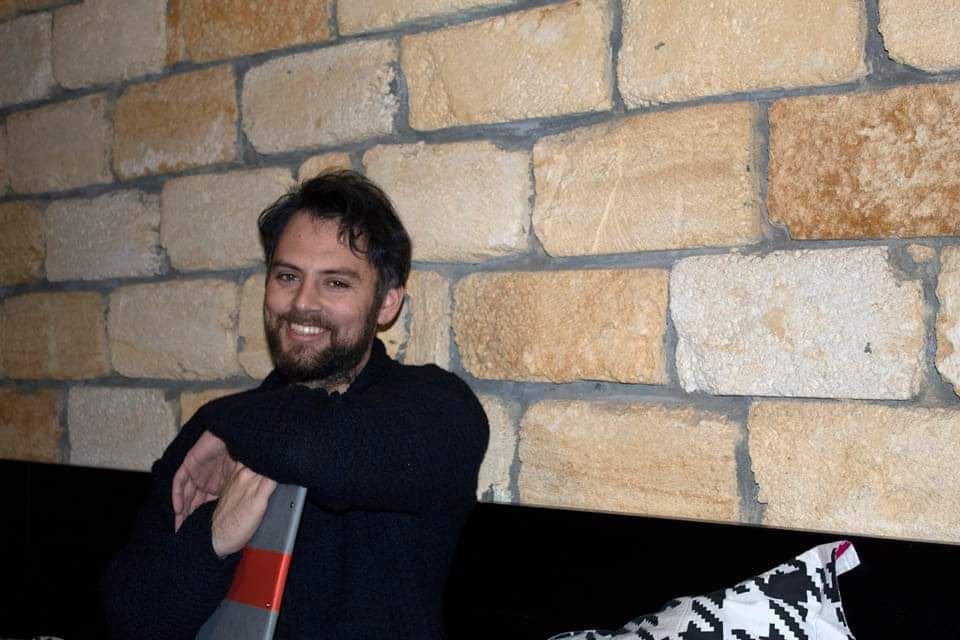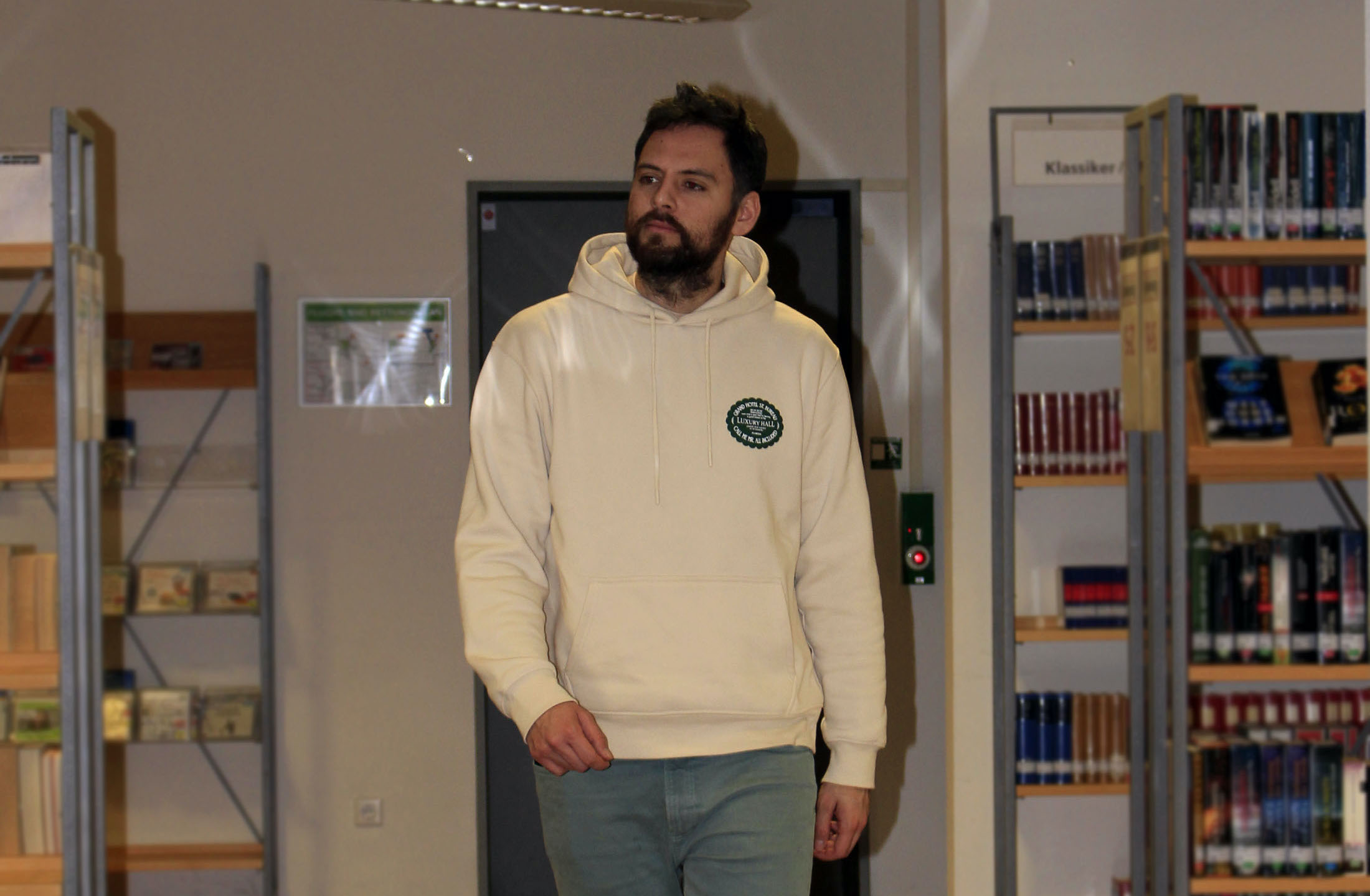«Ukrainian Romanis cannot exist without Ukraine, and Ukraine cannot exist without its Romanis»
Recently, Romani language has been added to the Google Translate service. There are approximately 15 ethnic Romani groups living in Ukraine. Each of them has a dialect of its own. Vlakhs and Servs are two of these groups that have been living in the territory of Ukraine for over 500 years. It was their dialects that have the largest number of loanwords from Ukrainian. So says Janusz Panchenko, a Ukrainian ethnographer of Romani origin, live on Ukrainian Radio. The Romani language is severely endangered, as it mostly only exists as a spoken language and has no codified written form.
«In order to avoid that, one should create interesting materials, cartoons, comic books. That is, do everything in order to popularise the Romani language. In order to do that, though, one needs time and support, both from the state authorities and from the society, by and large», — notes the specialist.

The Romani language has been shaped outside its natural habitat
– Where does the Romani language come from?
–The Romani language is one of the Indian (Hindu) languages which has acquired its shaped outside its natural habitat: Hindustan. Thereby, the Romani language differs a lot from all the other Indian languages. The ancestors of Romanis had migrated from Central and Northern India and, on their way, they criss-crossed with different cultures and languages amid which they resided. And all those cultures and languages made an impact upon something that then became the Romani language. Cultural and linguistic borrowings were taking place.
This is a usual story for the South Asian region—when nomadic tribes were leaving the territory of Persia, migrating to other countries. Romanis were the ones that went furthest of them all: to Europe. This is the unique thing about them. There are many Romani-like nations in the East, speaking a similar language. Still, those are other nations, with a separate language. Romanis have been living outside India for the past 1,200-1,600 years but there are still plenty of words of Indian origin in their language.

Romanis have been living in Ukraine for about 500 years
– How much of Ukrainian vocabulary is present in the Romani language?
– By and large, there are plenty of ethnic Romani groups in Europe. 15 of these live in Ukraine and each of them has its own language. Some have lost their mother tongue and mostly converse in Romanian. So, in fact, there are actually 12 living dialects present in Ukraine. All of these groups have migrated to the Ukrainian territory at a different time, from different countries. So, these dialects differ a lot. There are some in which there are plenty of loanwords from Ukrainian. There is a Central Ukrainian dialect containing plenty of loanwords from Crimean Tatar; there are other dialects wherein you will find a lot of loanwords from Hungarian and Romanian, and so on, and so forth.
As far as loanwords from Ukrainian are concerned, this is the dialect of Vlakhs and Servs. Vlakhs and Servs are two of these groups that have been living in the territory of Ukraine for over 500 years. Over the centuries, plenty of loanwords from Ukrainian have permeated their dialects. These words are now perceived as Romani words. Sometimes, they sound a bit outdated, so even native speakers of Ukrainians do not know these words. For instance, zhardelia is a Ukrainian word for apricot. There are Romani groups that have been shaped in Ukraine and then migrated, say, to the Kuban Land. So Vlakhs who live there use a lot of Ukrainian words.
Romani Radio as an instrument to popularise the Romani language
– What is the current state of the Romani language in Ukraine and worldwide? Are there any programmes in place to protect the Romani language and prevent it from going extinct?
– The Romani language is widespread globally and it has a lot of dialects. So, there are different processes going on in each specific country: some materials are published, some books, some cartoons. It is very important to remember the fact that Romani is a spoken language. It has been passed over generations orally, and has never been registered in writing. There are no written records. Now, on the other hand, there are many different materials in the making. In Sweden, there is a Radio Romano broadcasting in the Romani language which has a broad audience, as it is part of the Swedish State Radio Broadcasting Service. There is another Romani radio station in Hungary.
Romanis are part of Ukraine’s history, part of Ukraine. Ukrainian Romanis cannot exist without Ukraine and neither can Ukraine exist without this part of its history: without Romanis. We therefore should be creating top quality, interesting materials, cartoons, comic books, and so on. That is, do everything in order to popularise the Romani language. In order to do that, though, one needs time and support, both from the state authorities and from the society, by and large.
The entire bulk of Romani music was of Russian origin
– How did the war impact your creative work? When was it that you started to write?
– It was from the early childhood that I wanted to write. I wanted to write songs. But since I am a bad singer, those became poems, not songs. I wanted to write, as the music in our region was Russian. The entire bulk of Romani music was of Russian origin All of the songs were in one dialect only: the dialect of Ruska Roma. I, on the other hand, wanted to have an alternative, hence I tried writing something in the Vlakh dialect.
My first attempts were translations of certain songs. I loved the music created by Sviatoslav Vakarchuk, so I tried to translate his songs. And thus, little by little, I started writing something of my own. I also translated poems by Ivan Franko into Romani language. Only two of my tales have been published as a hardcopy (issued back in 2022). Most of my tales are still not published.
Historically, Romani has been an oral language
– Where can one learn Romani?
– Recently, Romani language has been added to the Google Translate service. Only recently efforts have been made to create a written Romani. What we want is to create a supra-dialect form of language. Historically, however, the Romani language has been a spoken one, so even representatives of the Romani community themselves, even those of them who have a very good command of spoken Romani, sometimes find it hard to read written Romani. They are just not accustomed to seeing the Romani language in writing.
In each and every country, they try to adapt Romani script to the script of their respective home country. In Ukraine, it is adapted to Ukrainian Cyrillic; in Romania it is adapted to Romania Latin; in Germany, German Latin script is used. Some lexicographers tried to create a script based on the Indian (Hindu) script. There also exists a provisionally codified international form, based on the Latin alphabet.
This material has been prepared by the Ukrainian Radio
See also
- Новий центр підтримки ромів у Сумах: хто отримає шанс на освіту
- Письменниця Тімея Шрек: «Життя так склалося, що повертаюся до коренів».
- Танцівниця Вікторія Чорна: «Саме ромський танок допомагає людям просто вижити»
- Громадські активісти і дослідники — про ромську мову, перспективи розвитку та загрози
- Лінгвіст Михайло Ослон: «За свої мови носіям зазвичай доводиться боротися самотужки».
- Музикант Віллі Пап-молодший: «Американський джаз або ромський джаз...»
- Художник Тиберій Йонаш: «У моїх планах відкрити величезний центр у ромській громаді»
- Психотерапевтка Ольга Голубицька: «Ти є людиною, яка варта уваги».
- Другий шанс на освіту. Або як працюють інтеграційні центри для ромів
- Ромська активістка Галина Сіладі: «Для мене поезія - спосіб життя»
